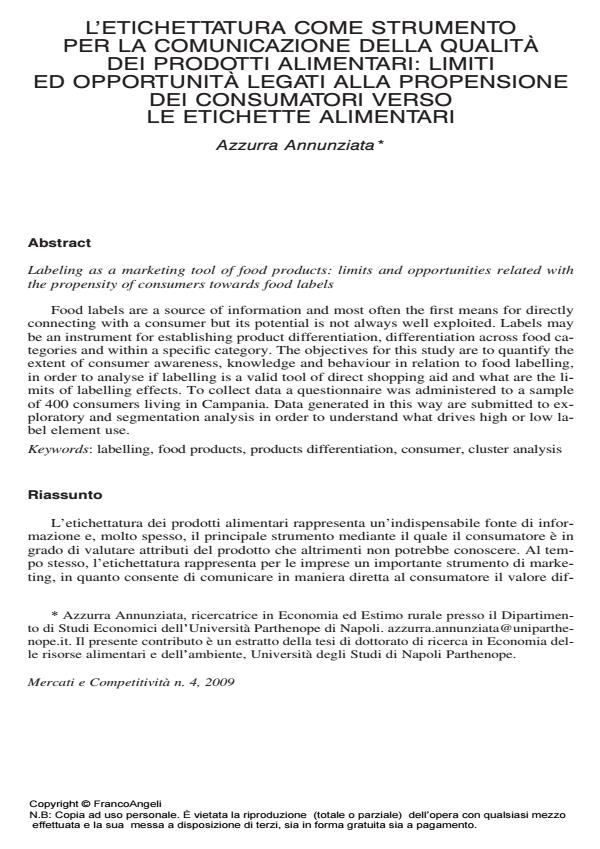L'etichettatura come strumento per la comunicazione della qualità dei prodotti alimentari: limiti ed opportunità legati alla propensione dei consumatori verso le etichette alimentari
Titolo Rivista MERCATI E COMPETITIVITÀ
Autori/Curatori Azzurra Annunziata
Anno di pubblicazione 2009 Fascicolo 2009/4
Lingua Italiano Numero pagine 20 P. 147-166 Dimensione file 1028 KB
DOI 10.3280/MC2009-004008
Il DOI è il codice a barre della proprietà intellettuale: per saperne di più
clicca qui
Qui sotto puoi vedere in anteprima la prima pagina di questo articolo.
Se questo articolo ti interessa, lo puoi acquistare (e scaricare in formato pdf) seguendo le facili indicazioni per acquistare il download credit. Acquista Download Credits per scaricare questo Articolo in formato PDF

FrancoAngeli è membro della Publishers International Linking Association, Inc (PILA)associazione indipendente e non profit per facilitare (attraverso i servizi tecnologici implementati da CrossRef.org) l’accesso degli studiosi ai contenuti digitali nelle pubblicazioni professionali e scientifiche
Labeling as a marketing tool of food products: limits and opportunities related with the propensity of consumers towards food labels - Food labels are a source of information and most often the first means for directly connecting with a consumer but its potential is not always well exploited. Labels may be an instrument for establishing product differentiation, differentiation across food categories and within a specific category. The objectives for this study are to quantify the extent of consumer awareness, knowledge and behaviour in relation to food labelling, in order to analyse if labelling is a valid tool of direct shopping aid and what are the limits of labelling effects. To collect data a questionnaire was administered to a sample of 400 consumers living in Campania. Data generated in this way are submitted to exploratory and segmentation analysis in order to understand what drives high or low label element use.
Parole chiave:Labelling, food products, products differentiation, consumer, cluster analysis
Azzurra Annunziata, L'etichettatura come strumento per la comunicazione della qualità dei prodotti alimentari: limiti ed opportunità legati alla propensione dei consumatori verso le etichette alimentari in "MERCATI E COMPETITIVITÀ" 4/2009, pp 147-166, DOI: 10.3280/MC2009-004008